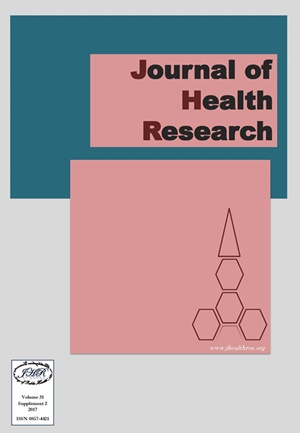Assessment of Need for Elderly in Community in Hang Dong District, Chiang Mai Province, Thailand Using Camberwell Assessment of Need for the Elderly Questionnaire (CANE)
Keywords:
Elderly, Care for elderly, Camberwell Assessment of Need for the Elderly Questionnaire (CANE), ThailandAbstract
Background: The population ageing is an inevitable demographic change occurring in many countries including Thailand. Therefore, the actual need of the elderly should be evaluated properly in order to manage the continuing growth of the ageing society. This study aimed to identify the needs and the sufficiency of support for elderlies using Camberwell Assessment of Need for the Elderly questionnaire (CANE) and determine the relationship between socio-demographic characteristics, living status and health status and needs of the elderly in community in Chiang Mai Province, Thailand
Method: The study design is a cross-sectional quantitative study. The CANE questionnaire was translated to Thai; and the validity and reliability test were performed. The translated version of questionnaire was reviewed by three experts. The IOC score of the questionnaire was 0.76. The reliability was test in 30 elderly samples. The Cronbach’s Alpha coefficient was 0.82. The data collection was performed by interviewing the participants using questionnaires as the guideline. The chi-square analysis was used to explore the association between and sociodemographic, living status and health status and need identification. The regression analysis was performed to evaluate association between independent factors and the number (level) of need, met need and unmet need
Results: Among 330 participants who aged 60 years old or above, 66.4% of them had at least one and 22.7% had at least one unmet need. The average need score of the sample was 3.09 out of 24 topics (SD= 3.33) which 0.4 was unmet need (SD=1.05). The areas which had high percentage of need were physical health, eyesight/hearing/communication and memory respectively, while the area with the high percentage of unmet need (per total need) were the self-care, caring for other, benefit and accommodation. The age, number of disease and type of insurance had significant association with the number of total needs whereas, the monthly income and living environment had relationship with the unmet need determination (p-value < 0.05).
Conclusions: Although the most frequent identified need was in physical area, the highest proportion of unmet need was found in function category. Even age, number of disease and type of insurance had association with the number of total needs, the monthly income and living environment were the factors determining the unmet need. Therefore, the more attention should be paid on needs in function area and the support for the cost of living and living environment.







